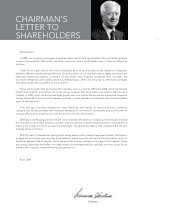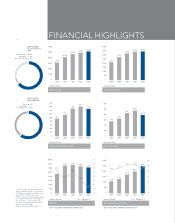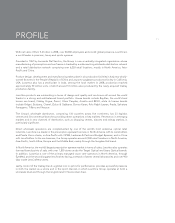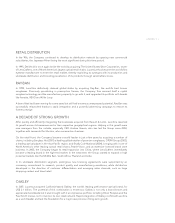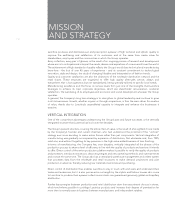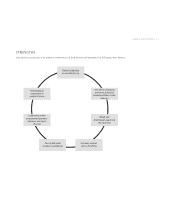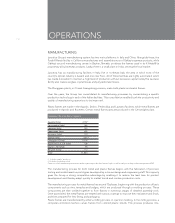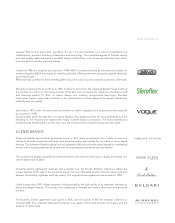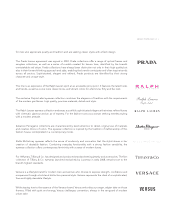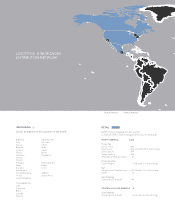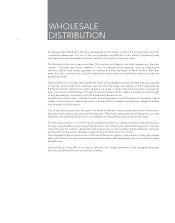LensCrafters 2008 Annual Report Download - page 16
Download and view the complete annual report
Please find page 16 of the 2008 LensCrafters annual report below. You can navigate through the pages in the report by either clicking on the pages listed below, or by using the keyword search tool below to find specific information within the annual report.
MANUFACTURING
Luxottica Group’s manufacturing system has two main platforms: in Italy and China. Alongside these, the
Foothill Ranch facility in California manufactures and assembles most of Oakley’s eyewear products, while
Oakley’s second manufacturing center in Dayton, Nevada, produces the frames used in its X Metal® (a
proprietary alloy) eyewear products. Lastly, there is a small plant in India, serving the local market.
Luxottica has six manufacturing facilities in Italy: five in northeast Italy, the area in which most of the
country’s optical industry is based, and one near Turin. All of these facilities are highly automated, which
has made it possible to maintain a high level of production without excessive capital outlay.The Lauriano
facility also makes sunglass crystal lenses and polycarbonate lenses.
The Dongguan plants, in China’s Guangdong province, make both plastic and metal frames.
Over the years, the Group has consolidated its manufacturing processes by concentrating a specific
production technology in each of the Italian facilities. This consolidation enabled both the productivity and
quality of manufacturing operations to be improved.
Plastic frames are made in the Agordo, Sedico, Pederobba and Lauriano facilities, while metal frames are
produced in Agordo and Rovereto. Certain metal frame parts are produced in the Cencenighe plant.
Headcount by manufacturing plant
Agordo (Italy) 2,357*
Cencenighe (Italy) 365
Lauriano (Italy) 525
Pederobba (Italy) 600
Rovereto (Italy) 715
Sedico (Italy) 1,681**
Dongguan (China) 4,429
Foothill Ranch, CA (USA) 729
Dayton, NV (USA) 90
Bhiwadi (India) 112
Total 11,603
(*) Includes samples’ production.
(**) Includes the distribution hub.
Operations include: manufacturing, maintenance, quality, engineering, product development, logistics, as well as employees working on plant management and R&D
The manufacturing process for both metal and plastic frames begins with the fabrication of precision
tooling and molds based on prototypes developed by in-house design and engineering staff. This capacity
gives the Group a strong competitive advantage by enabling it to reduce the lead time for product
development and thereby adapt quickly to market trends and contain production costs.
The manufacturing process for metal frames has around 70 phases, beginning with the production of basic
components such as rims, temples and bridges, which are produced through a molding process. These
components are then welded together to form frames in numerous stages of detailed assembly work.
Once assembled, the metal frames are treated with various coatings to improve their resistance and finish,
and then prepared for lens fitting and packaging.
Plastic frames are manufactured by either a milling process or injection molding. In the milling process, a
computer-controlled machine carves frames from colored plastic sheets. This process produces rims,
OPERATIONS
> 14



